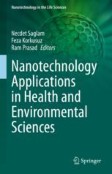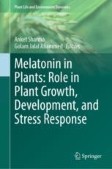Search
Search Results
-
Synthesis of molecularly imprinted polymer for the removal of cyanazine from aqueous samples
BackgroundCyanazine (CYZ) is one of the triazine herbicides to prevent broadleaf grass and weeds in crops. Despite its affordability and productivity...

-
Molecularly Imprinted Polymers Coupled with Cellulosic Paper-Based Analytical Devices for Biosensing Applications
Molecularly imprinted polymers (MIPs) function as versatile and highly selective elements in biosensing, mimicking biomolecular receptors and...

-
Molecular Imprinting Polymer (MIP) in the Detection of Microcystin-LR
Algal blooms cause the release of numerous toxins into water resources which can have adverse effects on life forms in and around them. One such...
-
Molecularly Imprinted Nanosensors for Microbial Contaminants
Nanotechnology-based sensor systems have received great attention for develo** methodologies to detect microbial contaminants. Increasing incidence...
-
Application of molecular imprinting approach for alkaloids analysis in food and nutraceuticals: review and perspective
Alkaloids are major dietary components well known for their pharmacological activities. Herbal matrices require extensive processing due to their...

-
Generation of High-Affinity Molecularly Imprinted Nanoparticles for Protein Recognition via a Solid-Phase Synthesis Protocol
Molecularly imprinted polymers are leading technology in the development of protein biomimetics. This chapter describes the protocol for the...
-
Nanobiosensors for Biomedical Applications
Nanobiosensors have several advantages such as fast response, easy use, high sensitivity, specificity, real-time analysis, and portability. Over the...
-
Modeling of Optimal Conditions for Immobilized Glucose Oxidase in Novel Polymeric Matrix Synthesized by Molecularly Imprinting Technique
As most enzymatic biocatalysts are soluble in water, effort for separation of free enzyme from the reaction media is one of the main challenges in...

-
Conductive Polymer Nanobiosensors
The conducting polymers (CPs) have been employed in a wide variety of modern applications as a replacement to metal or metal-based processes owing to...
-
Enantiospecific Sorption of L-Lysin by Molecularly Imprinted Sorbents Based on Methacrylic Acid and Ethylene Glycol Dimethacrylate
AbstractL-lysine-imprinted polymeric sorbents based on methacrylic acid and ethylene glycol dimethacrylate have been synthesized. The equilibrium and...

-
Advancing Frontiers: Graphene-Based Nano-biosensor Platforms for Cutting-Edge Research and Future Innovations
Graphene and its derivatives have excellent electrical, mechanical, and optical capabilities, making it the perfect foundation for sensing living...

-
Advanced Functional Polymers for Biomedical Applications: Drug, Sensor, Diagnosis, and Prognosis
Since the last decade, the use of functional polymers for diagnosis, prognosis, and treatment in medicine is develo** rapidly. The functional...
-
A Mini Review on Electrochemical Nano-biosensors in Detection of Drugs/Pesticides
AbstractIn last few years, sensing of molecules has gained a huge attention of scientists and researchers. Small molecules (drugs, pesticides, and...

-
Nanomaterials in Electrochemical Biosensors and Their Applications
Nanotechnology is a revolutionary breakthrough in the field of science and technology. Today the smart use of nanomaterials in different sectors such...
-
Current Trends in Biosynthesis, Extraction, Purification, and Refining of Antibiotics
Antibiotics are a class of molecules that resist infections developed by microbes. Antimicrobial resistance is posing a greater threat to combating...
-
Probing low-copy-number proteins in single living cells using single-cell plasmonic immunosandwich assays
Cellular heterogeneity is pervasive and of paramount importance in biology. Single-cell analysis techniques are indispensable for understanding the...

-
Application of Nanotechnology in the Food Industry
Among vast areas of potential uses, nanotechnology applications have emerged as new possibilities in the industry related to food. The use of...
-
Nanoenabled Sensing Methods for Pesticide Detection
Pesticides comprise a group of chemical compounds used to control or eliminate pests, insects, or rodents for crop protection. Chemically, pesticides...
-
Recent advances in the potential applications of luminescence-based, SPR-based, and carbon-based biosensors
AbstractThe need for biosensors has evolved in the detection of molecules, diseases, and pollution from various sources. This requirement has headed...

-
Advances in Tools and Techniques to Quantify Melatonin in Plants and Foodstuff
As an ancient pleiotropic molecule, melatonin (N-acetyl-5-methoxytryptamine) regulates numerous cellular, physiological, biochemical, and molecular...
